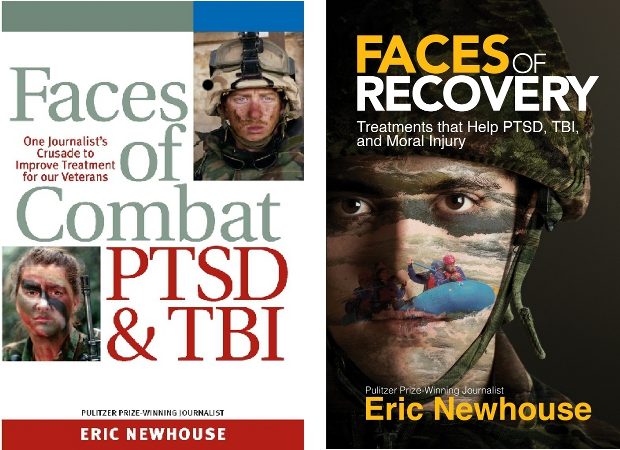“War scars us all, but does the most damage to those closest to it.“
In his book, Faces of Combat, author Eric Newhouse describes PTSD (Post Traumatic Stress Disorder) as “…a series of persistent symptoms that follow exposure to a catastrophe or series of catastrophes that are outside a person’s control and that cause feelings of intense fear, helplessness, or horror.”
If you are unfamiliar with PTSD, Newhouse’s definition paints a somber picture of the living hell that people suffering from PTSD go though each and every day. But what makes veterans in particular so susceptible to the disorder?

Veterans who see combat can often experience these extremely stressful situations (or catastrophes) several times per day during tours that can last for years at a time. Each stressful situation compounds upon all the stressful situations that came before it, all but ensuring lasting effects long after the soldier returns home from duty. This untreated PTSD is largely why the suicide rate among veterans is statistically higher than the national average.
To support this theory, let’s look at some data.
The 2022 National Veteran Suicide Prevention Annual Report conducted by the VA states that “In each year from 2001 through 2020, age and sex-adjusted suicide rates of Veterans exceeded those of non-Veteran U.S. adults.” Specifically, the report lists the 2020 rate of suicide among veterans as 57.3% higher than the general, non-veteran population.
Another study performed in 2017 found that 12.9% of their veteran participants were living with PTSD, compared to just 6.8% of the general, non-veteran population. This means veterans are almost twice as likely to have some form of PTSD and, when taken into consideration with the 2022 Suicide Prevention study by the VA, suggests a direct link between combat-related PTSD and suicide rates among veterans.
But despite how dire things may seem, there are reasons to feel optimistic about the future.
Thankfully, a lot of positive action has been taken in the past few years that is starting to yield very promising results. For instance, 2020 saw the lowest number of veteran suicides since 2006. Furthermore, the adjusted rate of veteran suicides is decreasing faster than the adjusted suicide rate of the general population, at 9.7% and 5.5% respectively. This means that things are absolutely trending in the right direction…but there’s still a long way to go.
In the meantime, each of us can focus on doing our part to fund programs that assist veterans. We can continue to spread awareness of the various programs that exist to provide mental health support to our veterans (several of which can be found here). The more visible these programs are, the more likely they are to be seen by the people who need them the most.
Are you a veteran in need of assistance? Click this link for a list of resources made specifically for you. If you’re having suicidal thoughts, please call either The National Veterans’ Foundation at 1-888-777-4443 or the VA Suicide Prevention Hotline at 1-800-273-TALK (800-273-8255). Both hotlines are free and confidential.
If you’re not a veteran but would still like to help out, you can get involved through our donation page here.







